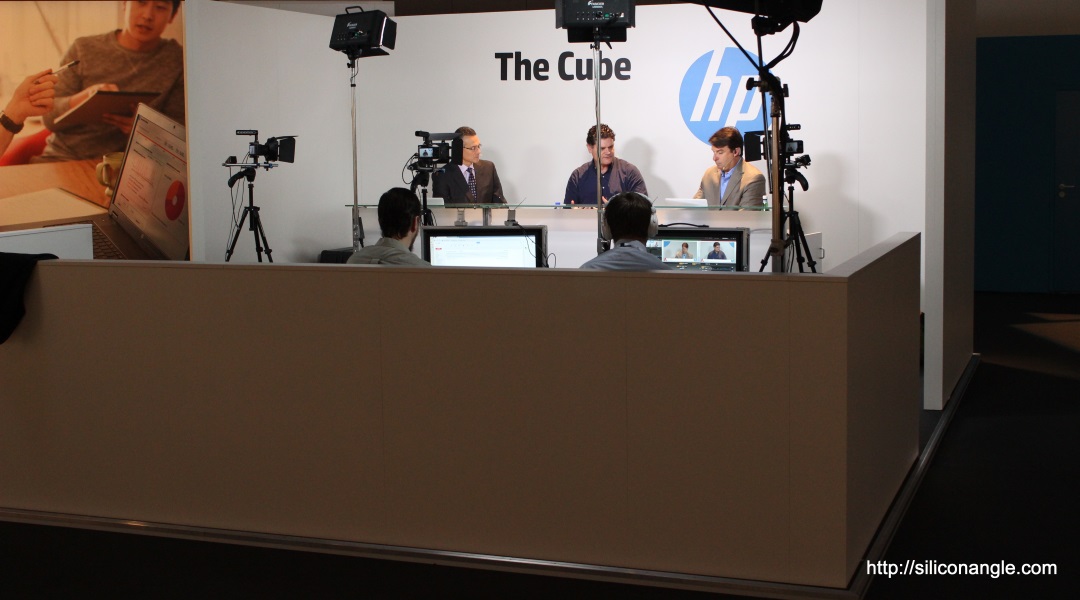 NEWS
NEWS
 NEWS
NEWS
 NEWS
NEWS
theCUBE at HP Discover in Barcelona
Mike Nefkins, Executive Vice President and General Manager for HP Enterprise Services, highlighted the company’s enterprise services businesses, “what we do and why we matter to enterprise clients” in his keynote from HP Discover Barcelona, a live presentation covered by theCUBE.
In 2013 the Enterprise Services division won 400 new clients, making its largest deal in the industry with US Navy, with entailed six million devices supported. The division now handles over 2000 large enterprises from across the globe.
Commenting on the efforts to improve customer satisfaction, Nefkins said, “we spend a lot of time trying to gain a better understanding of what’s important to you.” To achieve that, HP employees talk to clients and analysts, and other industry leaders.
Nefkins highlighted the five key drivers HP clients usually have to take into account:
.
.
1. Your customers’ experience
Understanding their needs and preferences, using the insight to create new products, services, channels. It basically targets the creation of customer intimacy.
.
2. Citizen engagement
.
3. Employee empowerment
Offering them the tools to do their job from wherever they are. Employees require the latest tech that most enterprises cannot even support in a secure manner, the main question to answer being “what’s our people strategy and how can technology enable it.
.
4. IT transformation
How technology can advance your business.
.
5. Acquisitions and divestitures
“Every day our HP services team works with enterprises, bringing the best of HP together to help you deliver the outcome that really matters.” HP aims to advise customers on a road map to get there, design new solutions to help transform, help them manage risk and drive innovation.
.
“Clients today are looking for domain expertise with specific industry knowledge,” Nefkins stated. Cloud, mobility, big data are all converging, and “clients are looking for flexible models, like a service.”
HP created 7 enterprise service practice area, such as mobility and workplace solutions, workload and cloud solutions, analytics and data management, enterprise security – which focuses on threat and vulnerability management, cloud security etc. The workload and cloud solutions practice area focuses on how workloads and cloud are managed with the right level of security, and no lock in, building on the OpenStack architecture.
.
Nefkins highlighted a case study involving a customer with 4000 enterprise applications who wanted them moved the cloud. The HP assessment showed 500 could sunset in 12 months. HP then assessed which can be taken to the public cloud – 600, kept some in traditional environments, as it was too expensive to get to the cloud. Then private cloud and virtual private cloud were factored in for the remaining applications.
“It starts with you, the customer, the industry you’re in, and what business driver you need to address. We then deliver a solution to you,” Nefkins explained.
He then presented another case study, that of Kazakh Railways partnering with HP with the goal of reducing energy consumption. HP delivered an automated railway energy management solution. Potential linear savings that resulted were of seven percent in energy, and 13 percent in diesel fuel.
Seadrill, another HP customer, had six months to plan, and execute for their new IT solution. The enterprise services solution offered virtual private cloud solution, with a second site for disaster recovery, hosted by the Wynyard Tier 3 data center in the UK. The result was an increases in both their IT and financial flexibility.
The final case study was presented together with the client, Carlos Abarca, of Sabadell back, a commercial bank with 200 billion dollar assets, 17000 employees, 12 branches in over 20 countries. “We achieved this size by doubling our figures since 2008 till now.” HP has been crucial for this growth. In 2009, Sabadell decided to virtualize all their desktops to cut costs and speed the acquisition process of other banks. “We are trying to combine different technologies, mobility, big data, to become a competitive player,” Abarca said.
“HP has been a fundamental partner for this journey.” As Nefkins points out, the banking industry is mainly mainframe-centric. “Most of the biggest banks of the world are sharing the same architecture” which haven’t evolved much since the early 1970s. Sabadell focuses on a new style of IT and a new style of bank, which includes tablets, paperless contracts, virtualized desktops, etc.
“We’re evolving and investing so we can meet your changing needs,” Nefkins concluded, using the “best practices in technology for you to leverage.”
THANK YOU